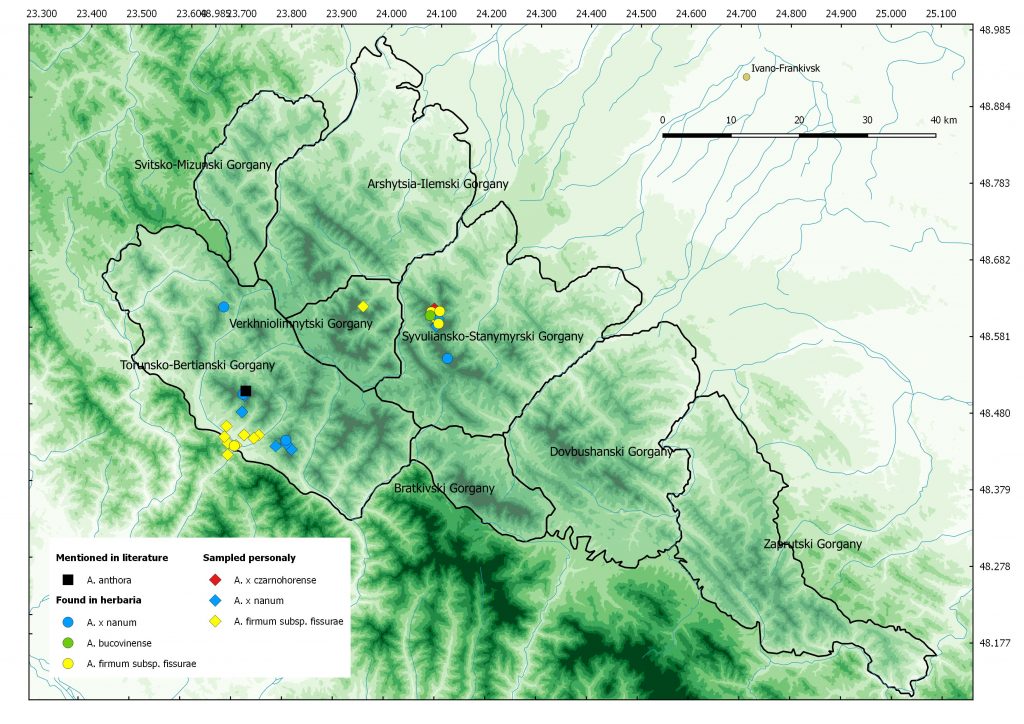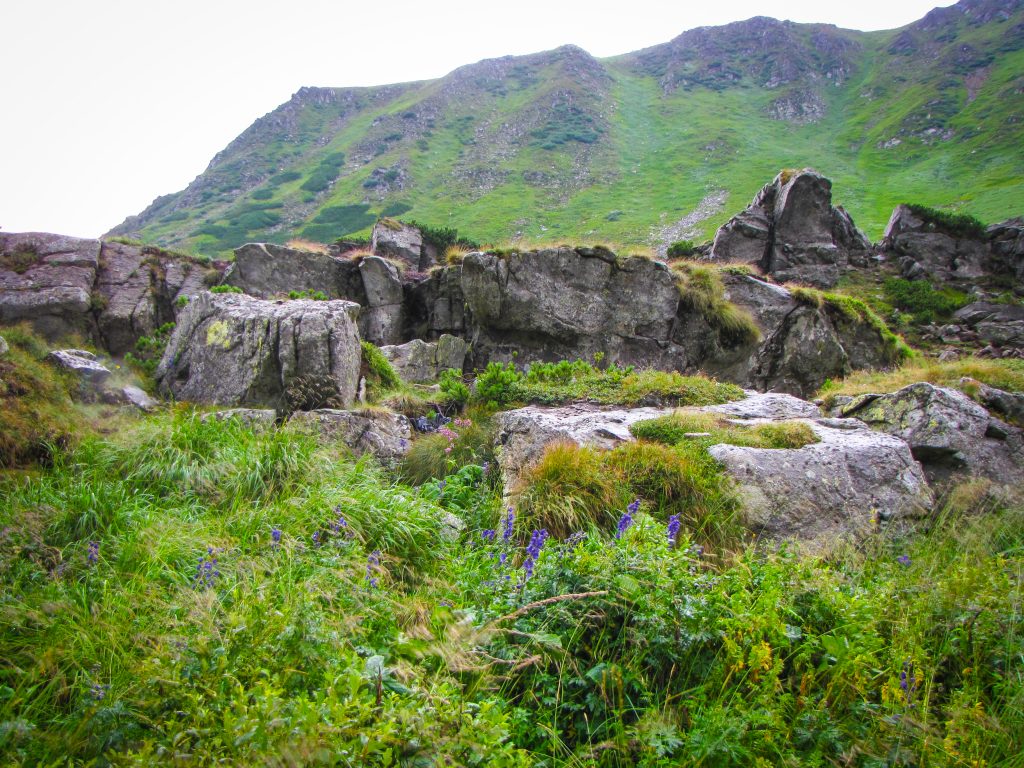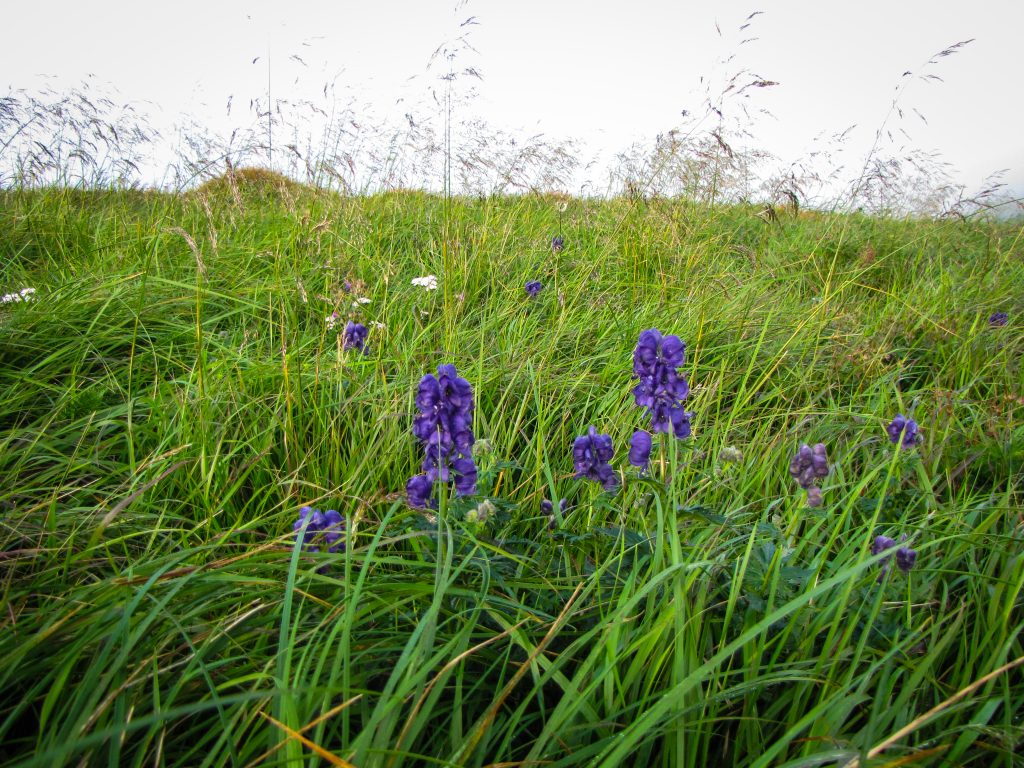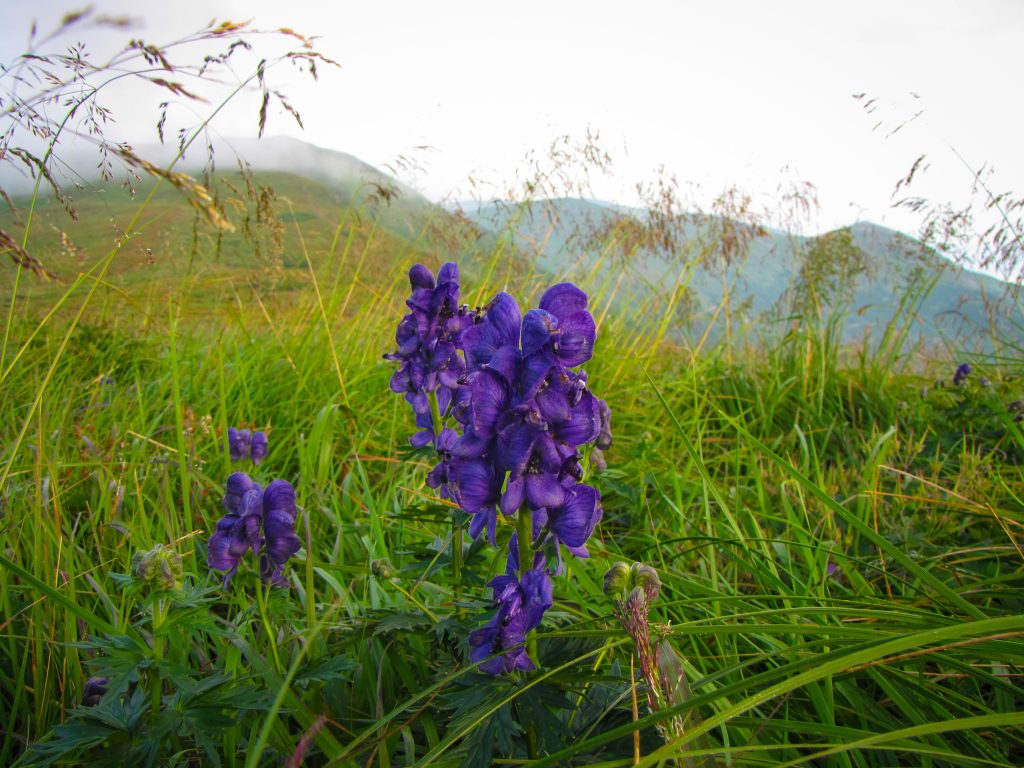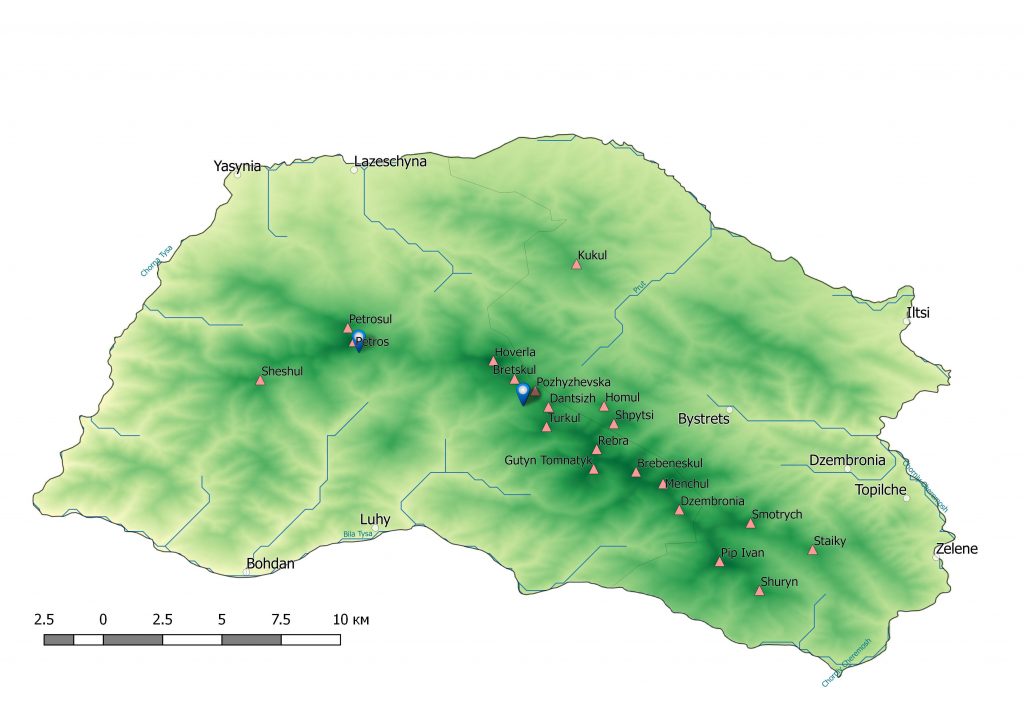Ecological preferences: Heliophytes, rarely – scio-heliophytes; mesophytes or meso-xerophytes, rarely – hygro-mesophytes; peracidophils or acidophils.
Distribution and habitats in Ukrainian Carpathians: In Ukrainian Carpathians are known only few confirmed localities in Chornohora, Chyvchyny, Gorgany and Eastern Beskids.
This species is mostly associated with higher montane and subalpine belts, however also occurs in alpine and lower montane belts. These plants grow mostly on open places in tallherb communities, on screes, in rock cracks, sometimes in ecotones with shrubs or just inside of the crown of low shrubs in subalpine and alpine belts. They also could be found along the streams and near mountain lakes. The species take a part in several communities – Juniperetum sibiricae, Pulmonario-Alnetum viridis, Pinetum mughi, and Poo-Deschampsietum.
Distribution and habitats in Chornogora: There are confirmed only two isolated mixed populations near Petrosul Mt. and on the saddle between Pozhyzhevska Mt. and Breskul Mt. In general these populations are in normal condition, but consist of less than 100 plants and cover less than 1 km2 of area. Generative plants there dominated and, as a result, populations could be identified as belonging to normal class of vitality. In Chornogora the species is known from Poo-Deschampsietum, and Juniperetum sibiricae communities on leptic cambisols and umbric gleysols.
Distribution and habitats in Gorgany: There are only two herbarium vouchers collected from Mt. Vysoka (Graniszewska M.; 01.08.2002; KRA 0224486) and Kolochava outskirts (Berko Y.; 11.08.1965; LWS 35424). Unfortunately I did not observe it personally in the field.
Threats: The overgrowing by woody plants and changes in the hydrological regime of habitats, as well as trampling by tourists. For Ukrainian Carpathians in general it could be designated as EN.
